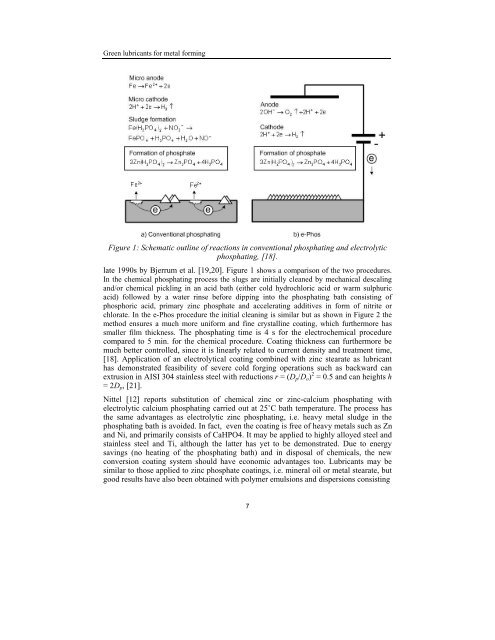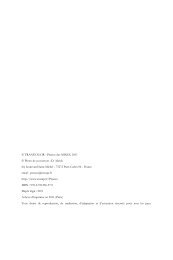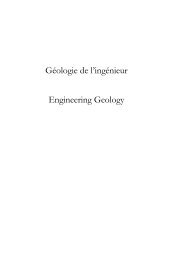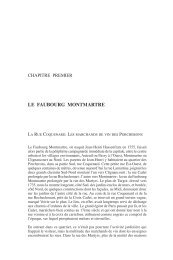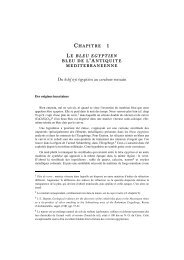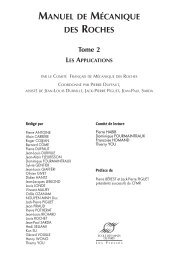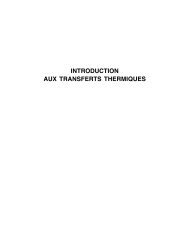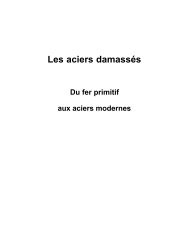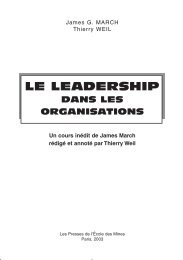4 th International Conference on <strong>Tribology</strong> in <strong>Manufacturing</strong> <strong>Processes</strong> - ICTMP 2010bonded to the metal substrate. The coated part is provided with a lubricant by dippinginto a hot bath <strong>of</strong> alkaline soap (typically sodium stearate) that reacts with the zincphosphate to form zinc stearate, which is eventually covered with excessive sodium soap[6,7]. The crystalline layer <strong>of</strong> zinc phosphate partly acts as a chemical agent binding thesoap to the surface, and partly as physical carrier for the soap. The coating procedurehas several environmental drawbacks [8-[13]: a) Sludge <strong>of</strong> (heavy) metal phosphates,which need to be reclaimed or buried, b) Large water requirement in the rinse baths, c)Periodic replacement <strong>of</strong> baths for degreasing, neutralizing, pickling and lubricationrequired, d) Large amounts <strong>of</strong> waste water, typically containing grease and tramp oils,acid, and soap. In addition to these environmental concerns, the phosphating processrequires prolonged treatment time, typically 5-15 min. and high bath temperature, 80-90˚C, [6,9].Zwez and Holz [14] report that modification <strong>of</strong> zinc phosphate coatings with calciumreduces the load <strong>of</strong> heavy metal zinc by 33% thus reducing the impact on environment.Within this conventional chemical treatment much progress has been made in the lastdeca<strong>des</strong> to reduce the consumption <strong>of</strong> chemicals and the amount <strong>of</strong> waste water. The use<strong>of</strong> advanced products for cleaning, pickling, phosphating and lubrication as well asimproved monitoring and adjustment <strong>of</strong> the chemical process prolongs the service life <strong>of</strong>baths considerably and reduces the consumption <strong>of</strong> chemicals by approximately 20%.For cold heading and drawing <strong>of</strong> wire, tubes and pr<strong>of</strong>iles, phosphating agents withnitrite or chlorate as accelerator are still widely used. This so-called “iron-free”phosphating process results in huge amounts <strong>of</strong> sludge <strong>of</strong> iron and heavy metalphosphates, which has to be disposed by burying. By introducing new phosphatingagents without the accelerating compounds <strong>of</strong> nitrite and chlorate the consumption <strong>of</strong>phosphating agents can be reduced by one third and the amount <strong>of</strong> sludge by 80-90%.For less demanding cold forging operations such as bolt production, the soap is replacedby oil with extreme pressure additives in form <strong>of</strong> sulphur and phosphor, [9,[15,[16].As alternatives to phosphate coating and soap, a number <strong>of</strong> lubrication systems for coldforging have been developed. They may be organized into the following groups:• New conversion coatings• Electrolytic phosphate coating• Microporous coating• Lubrication without conversion coating• Dual bath systems• Single bath systems2.1 NEW CONVERSION COATINGS2.1.1 Electrolytic PhosphatingMany <strong>of</strong> the drawbacks associated with zinc phosphates are eliminated by electrolyticphosphating, [12,17,18]. A sludge free phosphating bath is obtained, the use <strong>of</strong> acid forpickling may be avoided by electrochemical pickling, the treatment time is considerablyshortened, the working environment is improved and the electrochemical proceduremakes it possible to phosphate high alloyed steels and stainless steel, as developed in the6
Green lubricants for metal formingFigure 1: Schematic outline <strong>of</strong> reactions in conventional phosphating and electrolyticphosphating, [18].late 1990s by Bjerrum et al. [19,20]. Figure 1 shows a comparison <strong>of</strong> the two procedures.In the chemical phosphating process the slugs are initially cleaned by mechanical <strong>des</strong>calingand/or chemical pickling in an acid bath (either cold hydrochloric acid or warm sulphuricacid) followed by a water rinse before dipping into the phosphating bath consisting <strong>of</strong>phosphoric acid, primary zinc phosphate and accelerating additives in form <strong>of</strong> nitrite orchlorate. In the e-Phos procedure the initial cleaning is similar but as shown in Figure 2 themethod ensures a much more uniform and fine crystalline coating, which furthermore hassmaller film thickness. The phosphating time is 4 s for the electrochemical procedurecompared to 5 min. for the chemical procedure. Coating thickness can furthermore bemuch better controlled, since it is linearly related to current density and treatment time,[18]. Application <strong>of</strong> an electrolytical coating combined with zinc stearate as lubricanthas demonstrated feasibility <strong>of</strong> severe cold forging operations such as backward canextrusion in AISI 304 stainless steel with reductions r = (D p /D o ) 2 = 0.5 and can heights h= 2D p , [21].Nittel [12] reports substitution <strong>of</strong> chemical zinc or zinc-calcium phosphating withelectrolytic calcium phosphating carried out at 25˚C bath temperature. The process hasthe same advantages as electrolytic zinc phosphating, i.e. heavy metal sludge in thephosphating bath is avoided. In fact, even the coating is free <strong>of</strong> heavy metals such as Znand Ni, and primarily consists <strong>of</strong> CaHPO4. It may be applied to highly alloyed steel andstainless steel and Ti, although the latter has yet to be demonstrated. Due to energysavings (no heating <strong>of</strong> the phosphating bath) and in disposal <strong>of</strong> chemicals, the newconversion coating system should have economic advantages too. Lubricants may besimilar to those applied to zinc phosphate coatings, i.e. mineral oil or metal stearate, butgood results have also been obtained with polymer emulsions and dispersions consisting7


